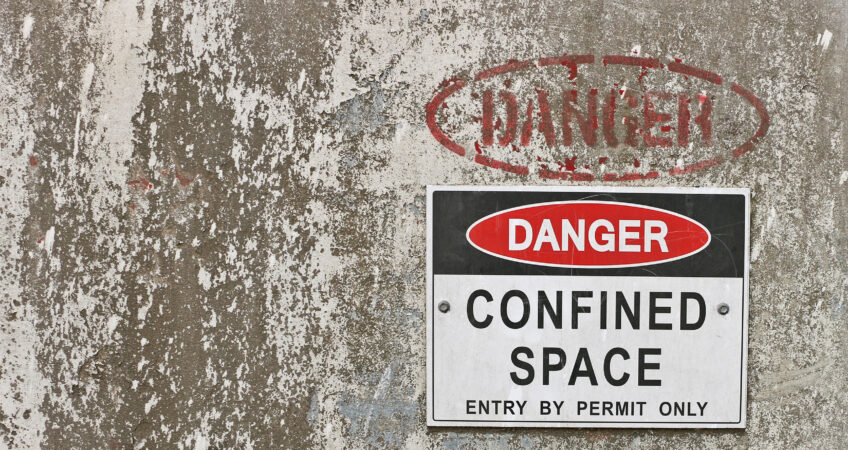Confined Spaces remain one of the most dangerous and misinformed areas of modern-day construction. It is imperative that workers understand the regulations regarding confined spaces in order to safely conduct work in them. The following information must not be considered a comprehensive guide to confined spaces, but rather a reference point or reminder on what confined spaces are and how to prepare for work in those spaces.
For more in depth information on confined spaces visit the OHSA regulations which can be found here: https://www.ontario.ca/laws/regulation/050632 .
Confined Space Definition:
A fully or partially enclosed space that:
- is both not designed or constructed for human occupancy, and
- in which atmospheric hazards may occur because of its construction, location or contents or because of work that is done in it.
* Note: Both factors (a) and (b) must be applicable for a space to be defined as a confined space.
Human Occupancy Definition:
“Although the regulation does not define human occupancy, the MOL uses the term ‘continuous human occupancy’ to refer to a space that has been designed and constructed in accordance with recognized codes and standards that contain provisions to make the space suitable for humans to occupy, such as provisions for structural adequacy, entry and exit, ventilation and lighting such that a human could continually occupy that space. Examples are the Ontario Building Code, the Ontario Fire Code, and CSA B52 (Mechanical Refrigeration Code).” – https://www.ontario.ca/document/guideline-working-confined-spaces
Atmospheric Hazard Definition:
- the accumulation of flammable, combustible, or explosive agents, or
- an oxygen content in the atmosphere that is less than 19.5 percent or more than 23 percent by volume, or
- the accumulation of atmospheric contaminants, including gases, vapours, fumes, dusts, or mists, that could
- result in acute health effects that pose an immediate threat to life, or
- interfere with a person’s ability to escape unaided from a confined space.
Before Working in a Confined Space:
- Atmospheric testing must be done
- Develop a safe work procedure for work in confined space
- Ensure all workers who are required to be in the space have the relevant training
- Hazard assessment carried out by a competent worker
- Develop controls for the hazards identified
- Establish methods of communication
- Establish a method of access and egress
- Develop an emergency response plan
- All documentation should be submitted and present for inspection
Relevant Regulations:
- (1) If a workplace includes a confined space that workers may enter to perform work, the employer shall ensure that a written program for the confined space is developed and maintained in accordance with this Regulation before a worker enters the confined space. O. Reg. 95/11, s. 4.
- (1) Before any worker enters a confined space, the employer shall ensure that an adequate assessment of the hazards related to the confined space has been carried out. O. Reg. 632/05, s. 6 (1).
- (1) Before any worker enters a confined space, the employer shall ensure that an adequate written plan, including procedures for the control of hazards identified in the assessment, has been developed and implemented by a competent person for the confined space. O. Reg. 632/05, s. 7 (1).
(1) Every worker who enters a confined space or who performs related work shall be given adequate training for safe work practices for working in confined spaces and for performing related work, including training in the recognition of hazards associated with confined spaces. O. Reg. 632/05, s. 8 (1).
* Note: for a complete list of regulations for Confined Spaces see the OHSA at https://www.ontario.ca/laws/regulation/050632 .


